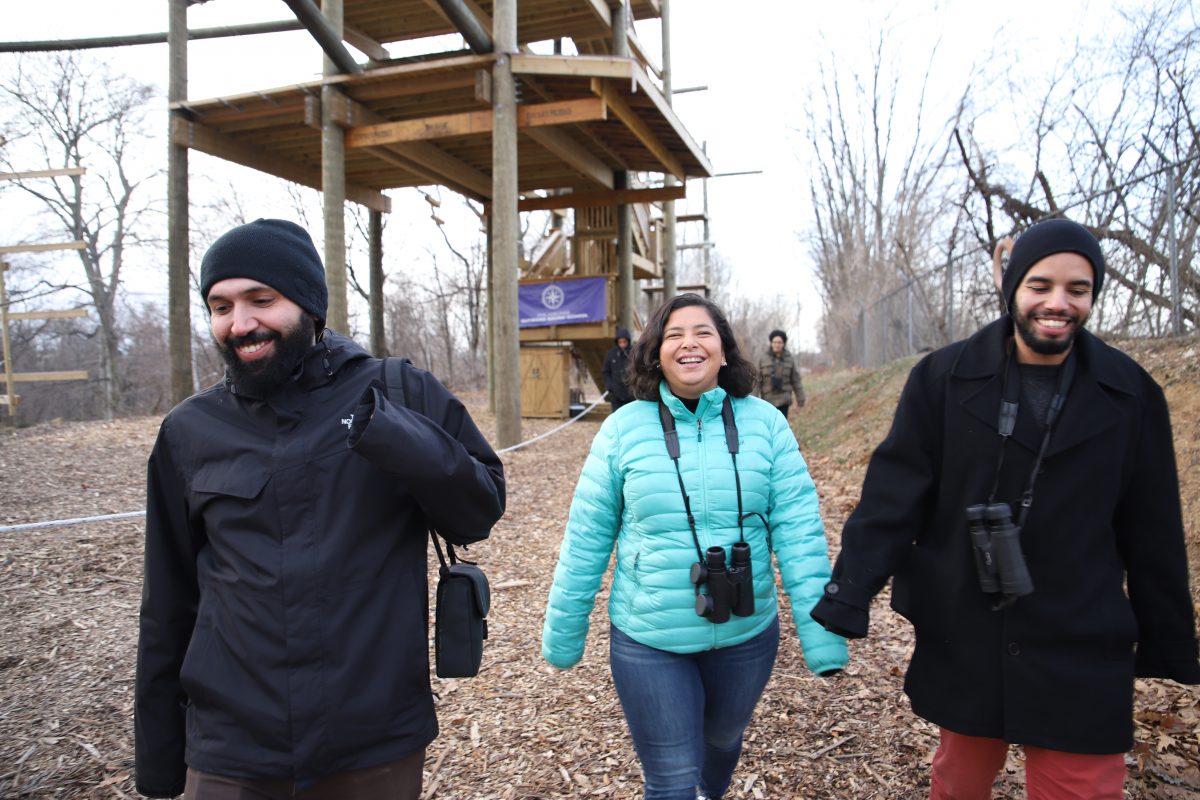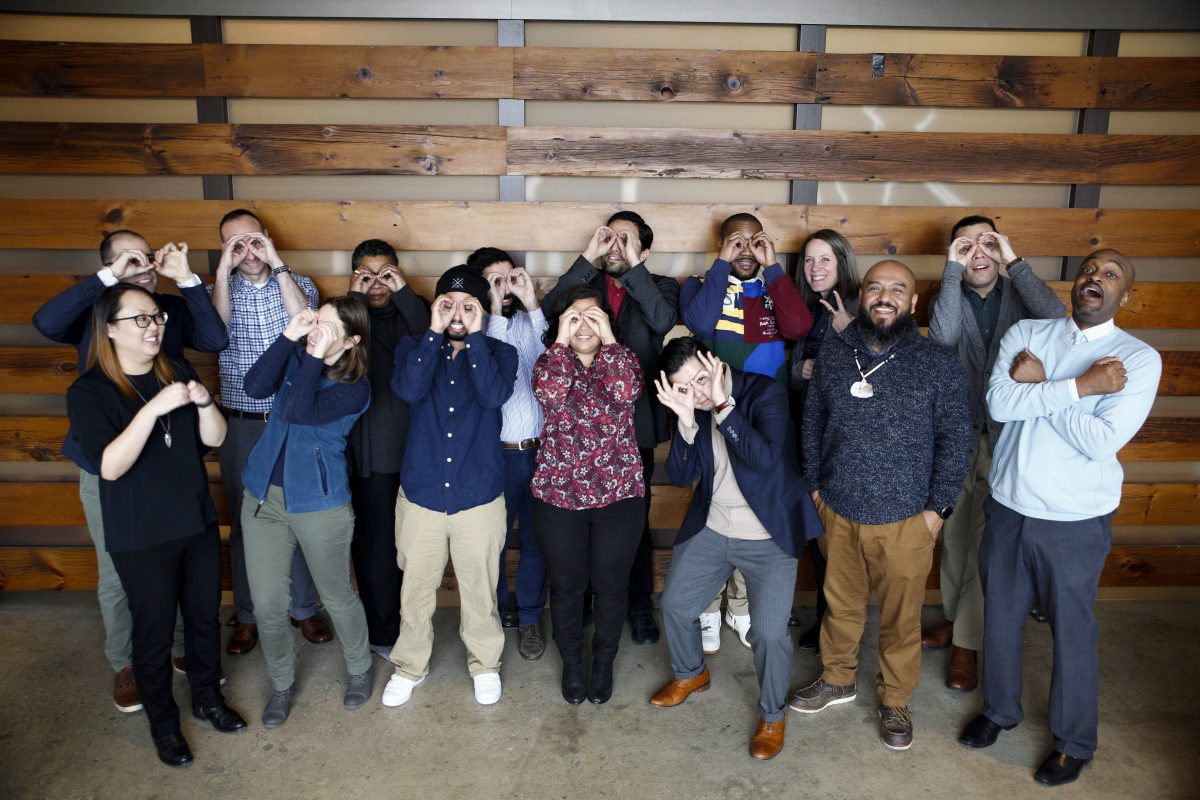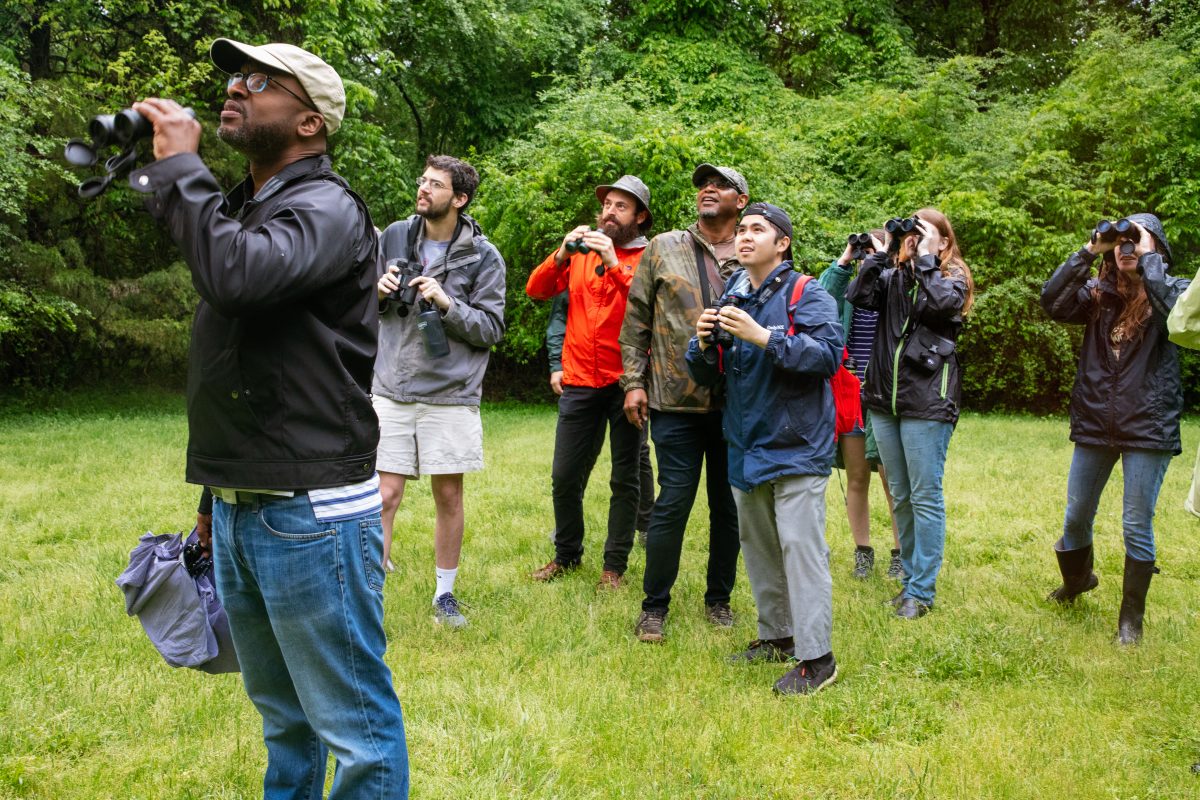Now a young adult, Tania Romero says the thing that stands out most in her mind about growing up in South Central Los Angeles isn’t the history of gang violence the area’s well known for but its lack of access to nature.
“There was … only one nature park that catered to the greater community,” she notes. Because of this, Romero says she knew nothing about conservation. “I didn’t even know it was a field,” she admits. Yet, having entered college undeclared, Romero quickly found herself fascinated by this unfamiliar field.
“I went to San Diego to go to the University of California, San Diego,” she says. “My first week of undergrad, I visited the San Diego Zoo, and I think that’s where a lot of things clicked in that respect, with me seeing an exhibit — the interaction between a hippo and monkey — asking questions … and then realizing that maybe this is something I want to study.”
A biology degree and several years later, Romero now works to introduce underrepresented youth in her community to nature and wildlife as an apprentice of the National Audubon Society. Working out of Audubon Center at Debs Park, she focuses on providing community engagement through Audubon’s Fund II Foundation Apprenticeship Program.
“They have opportunities to … take an affirmative role in educating young people and young people of color about why it’s important to protect birds and wildlife habitat — and the fact that there is space and a place at Audubon for people who want to join the fight.”
This year-long, full-time apprenticeship for young, diverse leaders entering the conservation field supports the organization’s vision “to create a more diverse and inclusive conservation movement,” according to Audubon’s website. Part of this work involves sparking culture change within the organization at large, says Deeohn Ferris, Audubon’s vice president of equity, diversity, and inclusion.
“By virtue of being inside the organization, they’re helping bring important change,” she says. “Also, in the function of their day-to-day work, they have opportunities to interact with the public and take an affirmative role in educating young people and young people of color about why it’s important to protect birds and wildlife habitat — and the fact that there is space and a place at Audubon for people who want to join the fight.”
The importance of this work, Ferris says, can’t be understated. “The future and vitality of environmental conservation and conservation nonprofits depends on making this change,” she notes.
Career Pathways to Conservation
Launched in 2018, the Fund II Foundation Apprenticeship Program was the brainchild of Ferris, who saw an opportunity to address two areas of need for Audubon and the primarily older, white birding community.

“Those areas relate to attracting and retaining young people at Audubon in terms of our workforce, our chapters and our members and attracting, including, involving and engaging people of color. These are two groups where we have a particular challenge,” says Ferris. “I conceived of an approach that would enable us to hit both of those targeted priorities.”
The Fund II Foundation Apprenticeship is geared toward young and diverse early-career professionals and students enrolled in graduate or law school who are interested in pursuing a career in environmental or conservation fields. However, Ferris says eligibility requirements are intentionally fluid, with loose definitions for “environmental” and “conservation.”
“That could be environmental science, it could be policy, it could be ornithology, it could be some element of one of the functions at Audubon — [for example,] a communications person who’s interested in social media,” she says. “I think the one throughline is that we would like there to be some interest on the part of the apprentices in helping us expand and attract new audiences, be they young people, be they people from different cultures, be they people of color.”
With backing from Fund II Foundation, Audubon was able to bring seven apprentices — and a program manager — on board for the inaugural class of 2019. Based on their interests, individuals were assigned to a function and location in Audubon’s nationwide network, where each one is overseen by a host manager. Current apprentices are based out of Philadelphia, Los Angeles, New York City, Atlanta and Washington, D.C.
In addition to being of different races and ethnicities, Ferris says their passions and talents run the gamut.

“Each of these young folks [brings] a different skill set to the table,” she says. “We have an apprentice who’s very interested in marketing and membership, and we have two apprentices who are focusing on community stakeholder engagement. We have an apprentice who is really interested in communications and social media, and we have another apprentice who is very interested in government affairs.”
Apprentices work to advance Audubon’s mission of “protecting birds and their habitat” by working in one of four areas: community stakeholder engagement, marketing, communications or government affairs. They are involved with the establishment of college chapters, community partnerships and relationships, educational and advocacy work and bird tourism as well as the convergence of conservation and social media or marketing.
“We have a communications apprentice in New York City who is working on news stories and social media stories that speak to the work that Audubon is doing and attract new audiences to [our] work,” says Ferris. “We also have a marketing apprentice in New York City who’s working with marketing staff around developing the types of partnerships that Audubon is engaged in. For example, we have a partnership with Canon to help folks understand how to better do bird photography.”
In addition to on-the-job training in Audubon chapters and nature centers, apprentices have access to professional development opportunities and receive classroom training. A couple times a month, apprentices participate in webinars focused on a variety of functions — including development, finance, marketing, fundraising, policy, et cetera — to learn all aspects of “the green nonprofit sector,” Ferris explains, “whether or not an apprentice is assigned tasks in those specific areas.”
“Hands-on conservation is Audubon’s bread and butter. Because [conservation] is so connected to what Audubon’s mission is, it would be hard to separate that from the experience.”
Given the nature of conservation work, there is a hands-on component to nearly all of Audubon’s apprenticeship positions, particularly those based out of one of Audubon’s nature centers.
“In all of these apprenticeships, there is an opportunity to, for example, work with young people on conservation at our nature centers or lead bird walks that help demonstrate the significance of protecting bird and wildlife habitat,” Ferris says. “Hands-on conservation is Audubon’s bread and butter. Because [conservation] is so connected to what Audubon’s mission is, it would be hard to separate that from the experience.”
One of the things Romero has enjoyed most about the apprenticeship is the flexibility it’s offered in terms of developing and being involved in projects that interest her and that she’s passionate about. This has included leading school field trips; managing 60 students in the Plants for Birds summer internship program, including teaching them techniques related to habitat restoration, transplanting, seed collecting and propagating; and leading 19 students during Audubon California Advocacy Day in May.
“[With] the way that this program was set up, it allowed me to [be involved from] the start to the end of a project, meaning I was able to brainstorm, plan things out, execute and then recap and summarize at the end of a project,” says Romero. “It’s an opportunity that I have not given before in other jobs. I was able to learn a lot and become more of a leader within this realm.”

How she has benefited professionally is only one of the rewarding aspects of her job, however.
“For me, I think one of the biggest things is seeing a non-birder come to a bird walk and then seeing them again at the next bird walk,” says Romero.
Expanding Conservation’s Reach
Admittedly, a large part of the Fund II Foundation Apprenticeship Program’s mission is to grow Audubon’s own diverse workforce, but Ferris emphasizes that this is not its sole purpose. It’s designed to help build pathways and facilitate apprentices’ entry into environmental and conservation careers more broadly.
“Our goal is not only to create an internal pipeline for Audubon in terms of potential employees; it is also to give these apprentices tools that they can take away from this experience and use under other auspices,” says Ferris. “They could spin out and create a nonprofit of their own, they could join another nonprofit or they could take these skills to the for-profit sector, academia or government. For us, it’s about skill sets and expanding the number of young people and people of color in the environment and conservation field writ large.”
The apprentices themselves are actively engaged in Audubon’s effort to appeal to a growing segment of young people of color — work that they, too, are passionate about.
“Our social media person, in particular, is a communicator and is developing stories that are of interest to different racial and cultural audiences and young people,” explains Ferris. “One of our apprentices, Jason Ward, is a social media star, and all of his social media is geared toward educating and attracting young people and young people of color into the bird world.”
For Romero, the apprenticeship’s focus on underrepresented communities was a significant draw.
“I always tell people, I could be doing conservation work anywhere if I really wanted to; I think I now have enough experience to be able to find entry into a lot of places,” she says. “But, to me, one of the biggest things about this apprenticeship is the fact that it is centered around providing access to communities that don’t have it, and I think that comes a lot from where I grew up in South Central.”
Having grown up with a dearth of conservation role models who looked like her, Romero now wants to fill that void for other young people of color and serve as a resource for them. She believes that diversity brings more, better ideas to the table and that in order for the conservation movement to sustain, all need to be represented in it.
“I don’t think the conservation movement is really going to be able to stand just on the communities [it’s] serving right now.”
“I don’t think the conservation movement is really going to be able to stand just on the communities [it’s] serving right now,” Romero says. “If we have a large population of people invested in conservation work — whether they decide to pursue the field or not — then we have a lot more connections to all of the wildlife everywhere.”
Although nothing is finalized, Ferris says “she is very confident” Audubon will be able to hire several of the apprentices into full-time positions following their completion of the Fund II Foundation program. Her hope is to continue the apprenticeship program into the future, with a round two in either 2020 or 2021.
“We’re not looking for a one-off,” Ferris says. “We would really like to be able to do this work ongoing — and hopefully with even more apprentices.”
Beyond the moral imperative of engaging people of color and young people in conservation work, Ferris says, ensuring their involvement is critical for addressing some of today’s most pressing environmental challenges.
“It’s more than a business case — it’s also about this very important point in time where we are dealing with existential challenges like climate change,” she says. “We need to engage everybody, and young people and people of color are core constituencies.”





